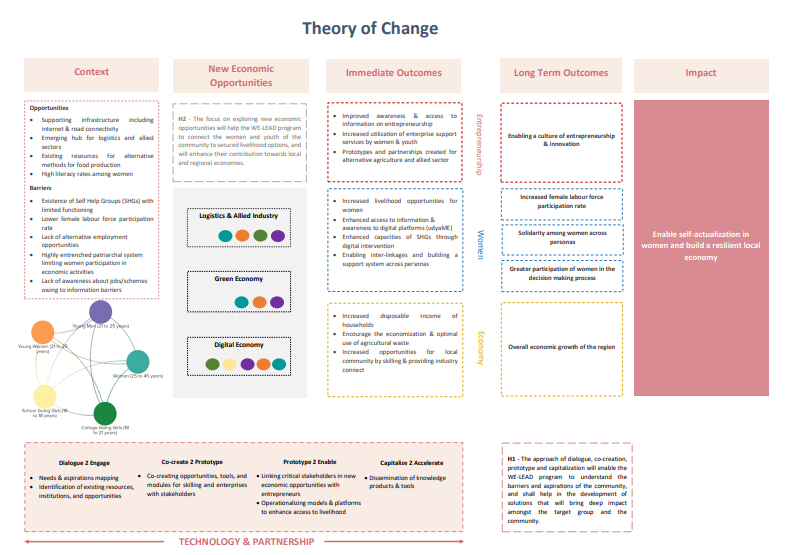|
Theory of Change: Its
Origin and Relevance
in Development Sector
Theory
of Change (ToC) is an approach to understand the process and the product
in any programme, and it has varied uses at different levels. It can be
developed for interventions ranging from an event to a policy as well.
It is difficult to trace the origin of ToC but it was in the early 1990s
that this approach gained traction in the developed world. The Aspen
Institute particularly focused on the utility of ToC for impact
evaluation in community programmes. The Roundtable at the Aspen
Institute led to the publication of a book called ‘New Approaches to
Evaluating Comprehensive Community Initiatives’. Carol Weiss focused on
how complex programmes become very difficult to evaluate in terms of
their impact, and the stakeholders remain unclear about the outcomes
that are to be achieved. She stated that it is important to understand
where you are to understand where you want to be.
ToC is meant to create a roadmap for the programme by outlining the
impact, and then tracing the process to the short- and long-term
outcomes. It offers a non-linear map which explains how different
components in the programme are connected. The diagram has multiple
pathways to reach the intermediate and long-term outcomes, which then
culminate into the overall impact of the programme. The diagram often is
backed by assumptions and a hypothesis as well. While creating a ToC for
any intervention, it is important to keep the following things in mind:
It is to be undertaken at the inception stage, that is, very early in
the programme
It involves a range of stakeholders to ensure that different
perspectives are taken into account
It can be facilitated through workshops and brainstorming exercises by
the team
In the ‘Women’s Empowerment through Livelihoods, Entrepreneurship, and
Access through Digitization’ (WE-LEAD), a Theory of Change was devised
during the inception period to understand the project objective, impact,
outcomes and context as well. The accompanying figure shows a glimpse of
the ToC.

ToC provides a visual representation of where you are, where you want to
be and how to reach from A to B. Additionally, it is meant to ensure
clarity and create a shared understanding of the project outcomes,
process and impact. The approach has also helped clients and other
stakeholders understand the project outcomes and impact better, enabling
better impact evaluation for interventions.
This approach also highlights how intervention design and evaluation are
completely intertwined, and how ToC can be utilised to measure and
evaluate outcomes during the designing stage itself. It is an effective
medium not just to measure but also to highlight if a programme is going
on the right path, and the shortfalls that may come later on in
achieving the outcomes. As ToC is becoming an inevitable feature of
development programmes, it has become pertinent to ensure that they are
an integral part of our programmes; providing guidance and a map to
reach the outcomes.■
Sushant Agrawal
skagrawal@devalt.org
Mahak Sharma
msharma1@devalt.org
Back to Contents
|
